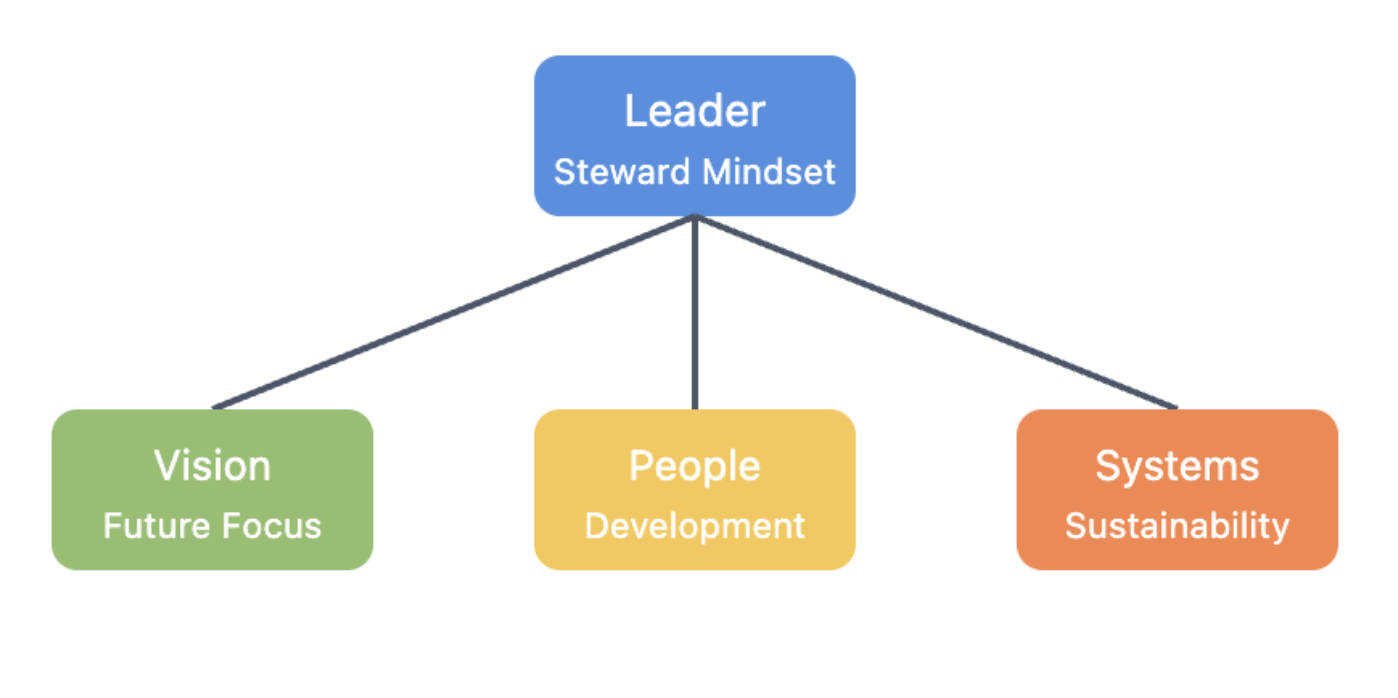In this unit, we will explore the concept of stewardship in leadership, focusing on the importance of taking care of both people and resources. As a leader, embracing stewardship means making decisions that benefit your team and organization in the long run, while also leading with a sense of purpose. By understanding and applying these principles, you can foster a sustainable and nurturing environment for your team.
Stewardship in leadership involves a commitment to taking care of both people and resources. This means ensuring that your team members feel valued and supported while also managing resources responsibly. For example, if your team is facing a resource shortage, you might say, "We need to prioritize our tasks to ensure we meet our goals without overextending our resources." This approach not only addresses immediate challenges but also reinforces the importance of sustainable practices.
To foster long-term sustainability, leaders must make decisions that align with both team needs and organizational goals. This involves balancing short-term demands with long-term objectives. For instance, when faced with a decision that could impact your team's future, consider how it aligns with your organization's mission and values.
You might explain to your team, "Our focus on sustainability ensures that we are not only meeting today's needs but also securing our future success." By prioritizing long-term sustainability, you create a stable foundation for your team and organization.
Leading with a sense of purpose requires long-term thinking and a clear vision for the future. This involves setting goals that reflect both immediate project demands and the broader objectives of your organization. When delegating tasks, consider how each responsibility contributes to the team's overall success. You might communicate to your team, "By aligning our tasks with our long-term goals, we ensure that our efforts are purposeful and impactful." This approach not only motivates your team but also reinforces the importance of working towards a shared vision.
 Let's consider a dialogue between two colleagues to illustrate these concepts:
Let's consider a dialogue between two colleagues to illustrate these concepts:
- Victoria: Hey Jake, I've been thinking about how we can better manage our resources for the upcoming project.
- Jake: That's a good point. We need to make sure we're not just focusing on immediate results but also thinking about the long-term impact.
- Victoria: Exactly. If we prioritize sustainability now, it will benefit us in the future. Maybe we can start by evaluating which tasks are essential and which can be streamlined.
- Jake: I agree. Let's also ensure that everyone on the team understands how their work contributes to our long-term goals. It will help them see the bigger picture.
In this dialogue, Victoria and Jake demonstrate the importance of stewardship by discussing resource management and long-term planning. They emphasize the need to balance immediate demands with future objectives, ensuring that their efforts are aligned with the organization's goals.
By embracing stewardship as a leader, you can create an environment that values both people and resources, fostering a culture of sustainability and purpose. As you apply these principles, you will be better equipped to lead your team towards a successful and sustainable future. In the upcoming practices, you will have the opportunity to practice these concepts in a realistic scenario.
